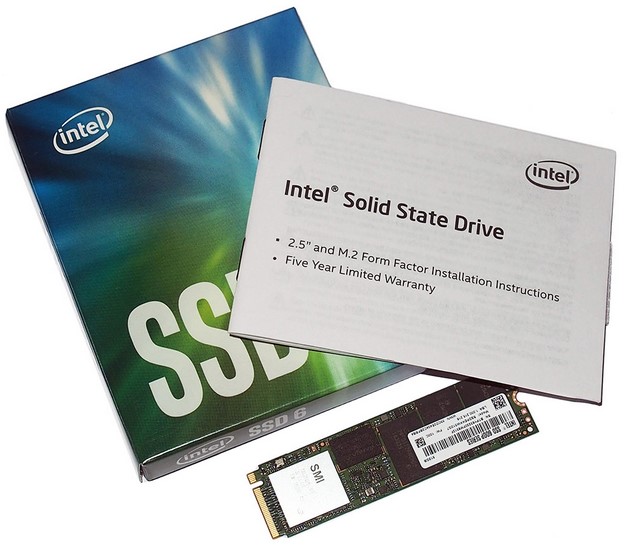Intel SSD 600P Solid State Drive Review: NVMe Performance, SATA Pricing
According to Intel, the SSD 600P series is “designed to deliver PCIe performance at near-SATA prices”. To date, most NVMe PCIe solid state drives are roughly 1.5 – 3x the cost per gigabyte of SATA based drives, due to the inherent performance benefits and likely the added cost of NVMe controllers. But, as the company has done a number of times in the past dating all the way back to the venerable X25, Intel is pushing hard to drive down prices in the segment. In fact, the 512GB Intel SSD 600P we’ll be showing you here today is already available at street prices below $.40 per gigabyte, which is only slightly higher than many SATA-based drives.
Leveraging 3D TLC NAND manufactured in concert with Micron is the primary factor that allowed Intel to price the 600P so aggressively. Here are some of the 600P’s main features and specifications, then we’ll follow up with a tour of the drive and performance characteristics.
|
| Capacity | Sequential Read (MB/s) |
Sequential Write (MB/s) |
Random Read (IOPS) |
Random Write (IOPS) |
Form Factor PCIe 3 x4 |
|
| 128 GB | 770 | 450 | 35,000 | 91,000 | M.2 |
|
| 256 GB | 1,570 | 540 | 71,000 | 112,000 | M.2 |
|
| 512 GB | 1,775 | 560 | 128,500 | 128,000 | M.2 |
|
| 1024 GB | 1,800 | 560 | 155,000 | 128,000 | M.2 |
|
The Intel SSD 600P will initially be offered in four capacities, 128GB on up to 1TB. All of the drives conform to the same M.2 (2280) 80mm ‘gumstick’ form factor, but performance varies depending on the capacity. The 128GB drive can offer up to 770MB/s reads and 450MB/s writes, while the 1TB drive peaks at 1.8GB/s reads, with 560MB/s writes. That kind of performance is far better than anything hanging off a SATA interface can muster, but it is not in the same class as more expensive NVMe PCIe-based drives like Intel's own SSD 750 series, Samsung's 950 Pro, or the Toshiba OCZ RD400.
As we've mentioned, all of the drives in the series leverage IMFT 3D TLC NAND flash memory, which is considerably more affordable than higher-price MLC NAND. Paired to the NAND is an DRAM cache, and a native NVMe PCI Express controller built by Silicon Motion (SMI), with input from Intel. If you look closely, you can actually see an Intel logo silk-screened onto the chip. You'll notice there's not much happening on the back of the drive, but the front is home to the controller, NAND, and DRAM cache.
The controller conforms to the NVMe 1.1 spec and has a x4 PCIe 3.0 interface (max bandwidth of 4GB/s). The drives also support all of the things you’d expect from a modern SSD, like TRIM, garbage collection, S.M.A.R.T., etc. Like some other drives that use TLC NAND, Intel configures a portion to act as an SLC cache. Depending on the capacity, however, the size of the cache will vary. The single die capacity on the 600P series is 48GB, and cache capacities rang from 4GB on the 128GB drive up to 32GB on the 1TB drive. The 256GB drive's SLC cache is 8.5GB and the 512GB drive you see here has 17.5GB provisioned for SLC cache duties.
Intel warranties the SSD 600P series drives for 5 years, which is on par with other NVMe PCIe solid state drives. In terms of the packaging and bundle, everything included is pictured above -- you get the drive, some basic documentation, and that's about it. Support for the 600P series is coming to Intel's SSD Toolbox utility, but as of press time, it hasn't been enabled just yet.









